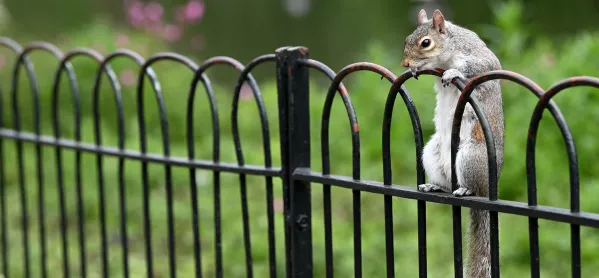- Home
- Video & Podcasts
- Research
- Transition: the four barriers in the way of success
Transition: the four barriers in the way of success

Transition from primary to secondary school, or between phases and sectors, is rarely easy. But for some pupils, the process can be overwhelming.
And, according to Stan Tucker and Dave Trotman, both professors of education policy at Newman University, in Birmingham, when this happens, it can have a lasting impact on a child’s education.
“For some of the most vulnerable, transition can be extremely difficult and they never recover from it,” says Trotman.
So, what do schools need to consider when they are thinking about how to minimise the negative effects of transition? In this week’s Tes Podagogy, we return to an episode from 2019 in which Tucker and Trotman explain the four reasons why transition is so hard to get right.
1. Different systems of education
One of the big problems, they say, is the fact that primary and secondary are fundamentally different systems of education.
“From the child’s point of view, that switch is enormous,” explains Tucker. “They have come from a place where education was not laid out in that way. The delivery of education is so different. The shift from primary to secondary is a group of children moving from what is essentially a caring relationship-based environment to a much bigger school where the whole pedagogical approach has changed… [it] is transmission rather than the discovery approaches in primary.”
2. Personal changes
The second barrier schools face, particularly around the transition between Years 6 and 7, is one that is largely out of their control: at this age, children are changing dramatically, too.
“What gets eclipsed in the physical move from primary to secondary is the transition these young people are going through biologically, in terms of identity, friendships and social groups,” says Trotman. “They are moving from a relatively simple environment to a much more complex environment, right at the stage they are going through adolescence with the attendant pressures that brings and the expectations that suddenly get put upon them socially but also academically.”
Much of the efforts schools make around transition - such as “taster” events - cannot compensate for these huge structural differences, and differing pressures within them, they say.
“There is this idea that if I spend a few days at the secondary school, somehow or other this will all work,” Tucker explains. However, he adds, this isn’t the case.
3. Shifting expectations
Alongside this, there’s a gradual increase in expectations of young people and a narrowing of the parameters of success as they move to secondary school. So, right at the moment when we put these children into a new environment, we raise the expectations of what they should be achieving.
And when these children struggle with transition, he says, we blame them, not the system.
Listen to more Podagogy:
- How to support pupils with ADHD, according to a psychologist
- Is AI set to change the way you teach?
- Why birthplace determines how children deal with stress
“We find in our discussions with children in alternative provision [AP] that they actually have very refined ideas, entrepreneurial ideas, of what they want to do, and good self-management, and lots of excitement about work they can do to get there, but those opportunities simply do not exist for them to do that,” he explains.
“One of the challenges of taking children out of mainstream into AP is the model assumes that young people can be ‘repaired’ and put back into school, which places the responsibility of the behaviour on the child and not on the system.”
4. Increase in performativity
Both academics argue that the increase in “performativity” in schools is leading to “faster and bigger’ issues with transition, especially for those with different needs.
“If you have a special education need you will likely find transition difficult. Numerous studies find issues for certain ethnicities, and there are issues for children who are more susceptible to the pressures put on them either from school or home, or a combination. We are also seeing in the research that young women are particularly at risk,” says Trotman.
In the podcast, the academics go on to discuss what they think are the solutions to these four factors and talk specifically about home to early years transition, and transition from school to further education and higher education.
You need a Tes subscription to read this article
Subscribe now to read this article and get other subscriber-only content:
- Unlimited access to all Tes magazine content
- Exclusive subscriber-only stories
- Award-winning email newsletters
Already a subscriber? Log in
You need a subscription to read this article
Subscribe now to read this article and get other subscriber-only content, including:
- Unlimited access to all Tes magazine content
- Exclusive subscriber-only stories
- Award-winning email newsletters
topics in this article



